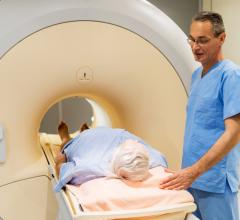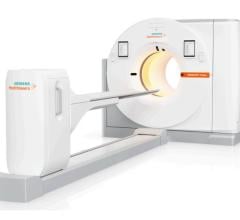June 18, 2008 - In a new study presented at SNM’s 55th Annual Meeting, technologists are using body mass index (BMI), instead of body weight, to provide patients optimal dosing of 18-fluoro-2-deoxyglucose (FDG), a radiopharmaceutical commonly used in oncology imaging.
BMI is a calculation that takes into account both a patient’s weight and height. Traditionally, only a patient’s weight has been taken into consideration when prescribing appropriate dosage of radiopharmaceuticals for positron emission tomography (PET) and computed tomography (CT) scans.
“Using BMI allows us to more specifically adjust dosing to individual patients,” said Sarah Krumrey, a technologist in the Department of Nuclear Medicine at St. Louis University Hospital, St. Louis, Mo., and lead author of the study, Should FDG Dose Be Based on BMI Instead of Body Weight? presented at SNM’s 55th Annual Meeting, June 14–18 in New Orleans.
Current procedures for PET/CT scans with FDG use a patient’s weight as the main factor in determining the appropriate dose. The goal of this study was to compare changes in PET/CT image quality as a result of switching from a weight-adjusted to a BMI-adjusted FDG dose. A BMI-adjusted dose was used in a total of a 104 patients undergoing PET/CT exams for known or suspected cancer. In this double-blinded study, PET/CT scans were reviewed and graded to access the image quality. Switching to a BMI-adjusted dose resulted in improved image quality and lower required dosage of 18-FDG.
“Based on our study, we believe that adjusting the FDG dose according to a patient’s BMI could lead to new imaging protocols,” added Krumrey. “The results of this study—which takes into account individual patient factors—could further advance personalized medicine,” said Krumrey. “Unlike a blanket approach, this allows us to avoid unnecessary dosing and better treat the patients in our care.”
Scientific Paper 2010: S.A. Krumrey, I. Tran, P. Yost, D. Oliver, N. Nhuyen, M. Osman, F. Qazi, Nuclear Medicine, St. Louis University Hospital, St. Louis, Mo.: “Should FDG Dose Be Based on BMI Instead of Body Weight?” SNM’s 55th Annual Meeting, June 14–18, 2008.
For more information: visit www.snm.org.


 October 30, 2025
October 30, 2025 









